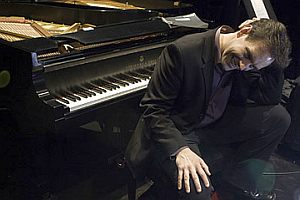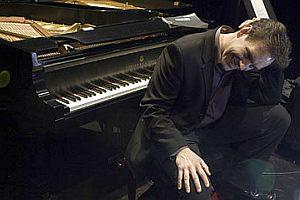
Beethoven’s Ninth Symphony trumps everything. What else can hold its own on a program with this searching quest that leads to the most fervent final movement in music history? The Oakland East Bay Symphony, under Music Director Michael Morgan’s baton, offered a proposal at once modest and moving in its season-ending concert at the Paramount Theatre on Friday. Hometown hero Jake Heggie’s intimate and spiritually infused song cycle The Deepest Desire: Four Meditations on Love proved to be a choice complement to the great symphony that followed. “Lose yourself upon the deeper currents,” a line in the work’s title song goes. It could be heard as both an inward musing and a summons to the communal exaltation of Beethoven’s “Ode to Joy.”
Premiered as a chamber work in 2002 and then scored for orchestra three years later, Desire is a setting of texts by Sister Helen Prejean, CSJ. Death penalty activist Prejean was the wellspring of Heggie’s 2000 opera, Dead Man Walking. Here she speaks directly and poetically about love as “the pure energy of God,” teaching obedience, justice, and prayer. It all begins with a soulful invocation. “The Call,” for flute solo, takes flight from its yearning opening bars into a trilling bird song that can’t help but suggest a biblical harbinger dove. Rena Urso-Trapani performed it with freshness, grace, and feeling on Friday night.
Heggie, who recently scored a critically acclaimed triumph with the premiere of his Moby-Dick opera in Dallas, uses the small figure of a major and minor third as a musical seed. It recurs throughout the work, grows into longer lines, blossoms into tremulous chords, and morphs into a jazzy, Milhaud-like passage at one point. The result is something both lean and rich, evoking the quiet intensity of prayer.
Mezzo-soprano Layna Chianakas gave a glowing, nuanced performance. The firm timbre and expressive range of her voice tracked the migrations of Prejean’s heart from praise to humility to wonder. When her words were discernible, in the more lightly orchestrated sections, she brought a light of empathy, compassion, and ardor to Prejean’s lines. But both the piece and the Paramount’s acoustics conquered Chianakas at times. With the house lights darkened a few minutes in, unfortunately, it was impossible to follow the program-book texts. Heggie’s affecting Desire would have registered more deeply if the audience had been able to travel along with it more closely.
Uneven Quality
Any performance of the Beethoven Ninth is an act of aspiration. No single reading can capture the work’s coruscating heights and depths. Morgan and his ensemble, bolstered by four soloists and the Oakland Symphony Chorus, had some stellar moments. After opening (and recurring) ensemble problems, the first movement came off predominantly decisive and crisp. Morgan took the second movement at a steady canter that offered the virtues of rhythmic clarity and directness.
The Adagio featured a caressing breadth of string sound, with the cellos and basses making a notable contribution just before bass-baritone Bojan Knezevic electrified the house with his plea, “O friends, no more of these sad tones!” The bass drum–accented march, with tenor Thomas Glenn chiming in excitedly, had the openhearted feel of a small-town prayer meeting. Sister Helen might have felt right at home.
Yet along with such glad tidings came some decided liabilities. Ragged entrances and poor alignments persisted. Balance was erratic. The chorus was spotty, the men in particular. The positioning of the timpani at the extreme stage right resulted in some odd displacements. The brasses had a less than exemplary night.
Still, there were no regrets about another encounter with this inexhaustible symphony. The Deepest Desire opened up the door to a sense of spiritual gratitude. And Beethoven, as he will, came charging through it.

